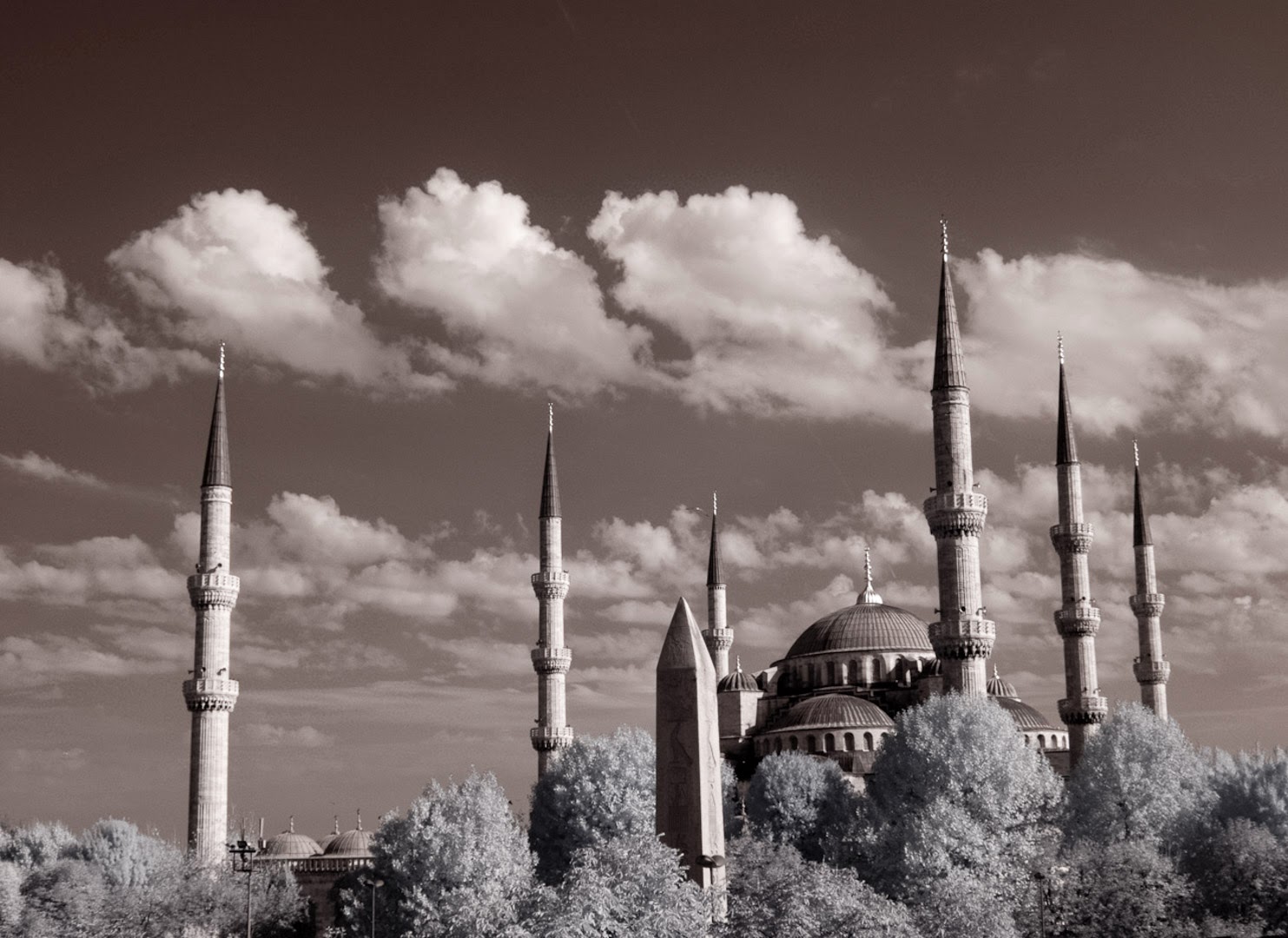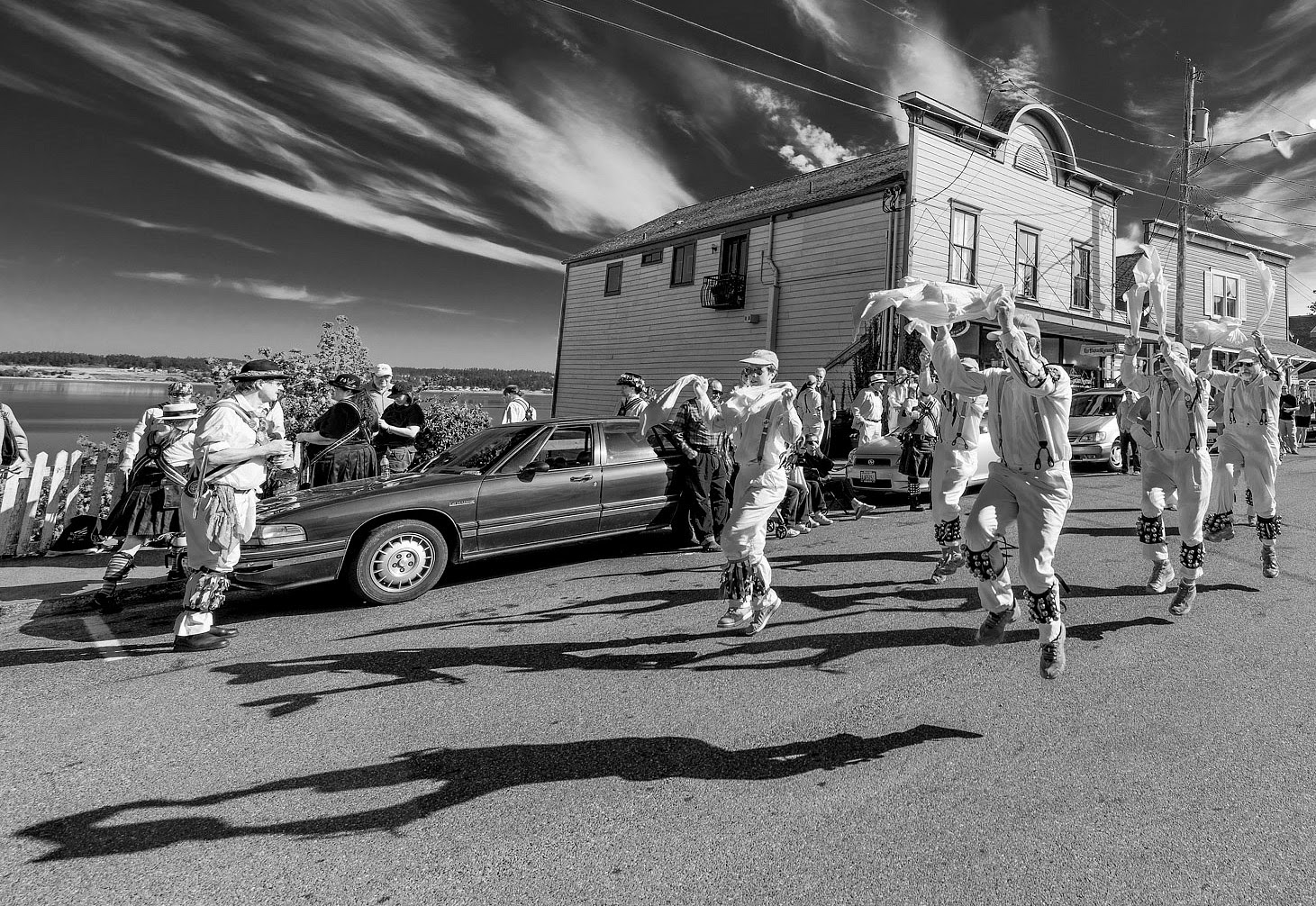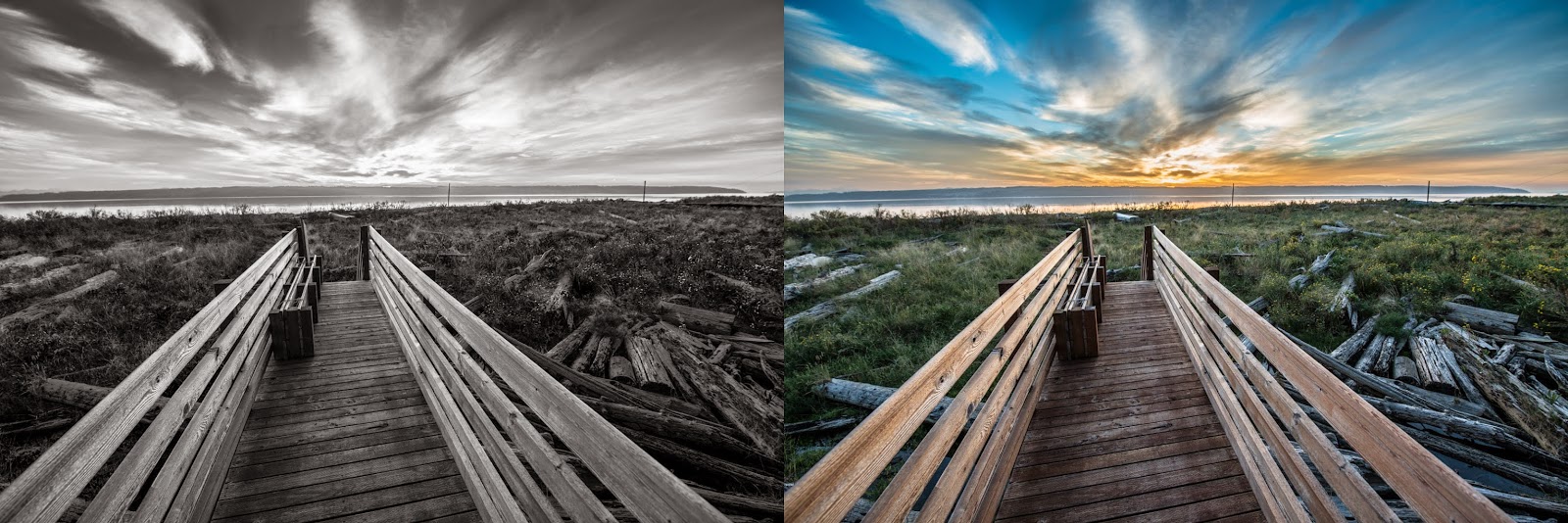Face it: digital monochrome is superior
to black-and-white film and conventional printing. You'll understand
this in my upcoming workshop, “Black and White and Not Quite.” To get a suggestion of why this is, read the sections What to Expect in the Workshop, and Getting to Monochrome below.
 |
| Blue Mosque (Istanbul) infrared capture |
A Little History
I received my first camera, a Brownie
Hawkeye, in 1957. I shot black and white print film. Now, nearly 60
years later, I'm again loving monochrome imaging.
During my early career as a
photographer—when I covered NASCAR and NHRA races—I shot about
ten times as much B&W film as color, principally because
four-color offset printing was expensive and we didn't publish a lot
of color in the magazines where I worked.
Since then color became more popular:
It became more affordable for consumers but also for publishers and
professional photographers; Kodak, Agfa, Fujifilm and others offered
a wide variety of color negative and transparency films. With the
advent of digital photography, color became the default image capture
mode (although monochrome could have been, and would have been
superior).
About a dozen years ago, I had an idea
for primarily monochrome output in which I created images with mostly
sepia tonality, leaving in just a dash of some of the underlying
colors. Then I started processing HDR images, again with an overall
toned monochrome feel but a hint of original color peeking through.
What got me thinking about B&W even
more was the availability of infrared-converted digital cameras. My
first was a Canon G10, which really got my creative juices flowing
when I took it to Istanbul and Bulgaria. In case you don't know, IR
images come out of cameras (at least when you shoot raw) reddish
monochrome. OK there are extended range IR conversions that produce
false color IR, but I didn't go that way.
I recently had a Nikon D7100 converted.
The lower noise in the D7100 images, coupled with the ability to use
better lenses, has me again enthusiastically shooting IR.
Make no mistake: I still use my color
camera to capture images destined for monochrome treatment. Right now
that's a 36MP Nikon D800. With a full-frame sensor, wide dynamic
range and low noise, it provides great raw material for black and
white processing.
 |
| Color conversion to monochrome |
What to Expect in the Workshop
Throughout this four day “non-linear”
workshop we'll alternate between theory, examples, demonstrations,
field work and processing.
So you take home some compelling new
imagery from Whidbey Island, we'll discuss how to identify and
visualize good subjects and compositions. You'll see how
black-and-white shooting differs from working in color and can
provide opportunities way beyond color. To mix things up, exercises
will give you a chance to demonstrate to yourself some often
misunderstood principles of photography, providing concrete ways to
better control what you capture.
We'll also mix up shooting locations,
covering iconic scenes and some of my secret spots. We take good
advantage of the shorelines, forests, farms and structures that make
Ebey's Landing National Historical Reserve a visual treasure.
 |
| Color/monochrome comparison |
Getting to Monochrome
Speaking of processing, we're going to
cover many workflow options in the workshop. With so many choices,
I'll help you zero in on what's the right path for you when you see
me step through the ins and outs of:
- Lightroom
- Photoshop
- Nik/Google Silver Efex
- Topaz B&W Effects
- DXO Filmpack
- On Software Perfect B&W 9
In addition to the actual conversion
processes, we'll explore how to maximize color images for later
monochrome conversion. Just as we choose the right color scenes to
create compelling monochrome photographs, we can optimize the color
content of our captures to achieve our artistic goals in B&W.
I most cases, you can download a 30-day trial version of these programs just before the workshop, then decide which to invest in after you've seen where each might best fit your workflow.
Some programs and topics we'll explore include:
- Raw file conversion in Lightroom, Adobe
Camera Raw and DXO Optics Pro
- Working in the LAB color space
- Creating luminance masks and employing
them to optimize single exposures and bracket sets.
- Adding pop to color precursors or mono
images with Topaz Clarity
- Performing local adjustments without
masks in Nik Viveza 2
- Building maximum tonal range from
bracketed exposures in HDR Efex 2 … or Photomatix, Photoshop,
Enfuse or a great HDR program you've never heard of.
- Adding finishing touches (such as
selective color and toning) and preparing for printing.
Join me to sharpen your general skills
and learn how to consistently produce B&W photographs that will
have viewers saying, “Wow!”











